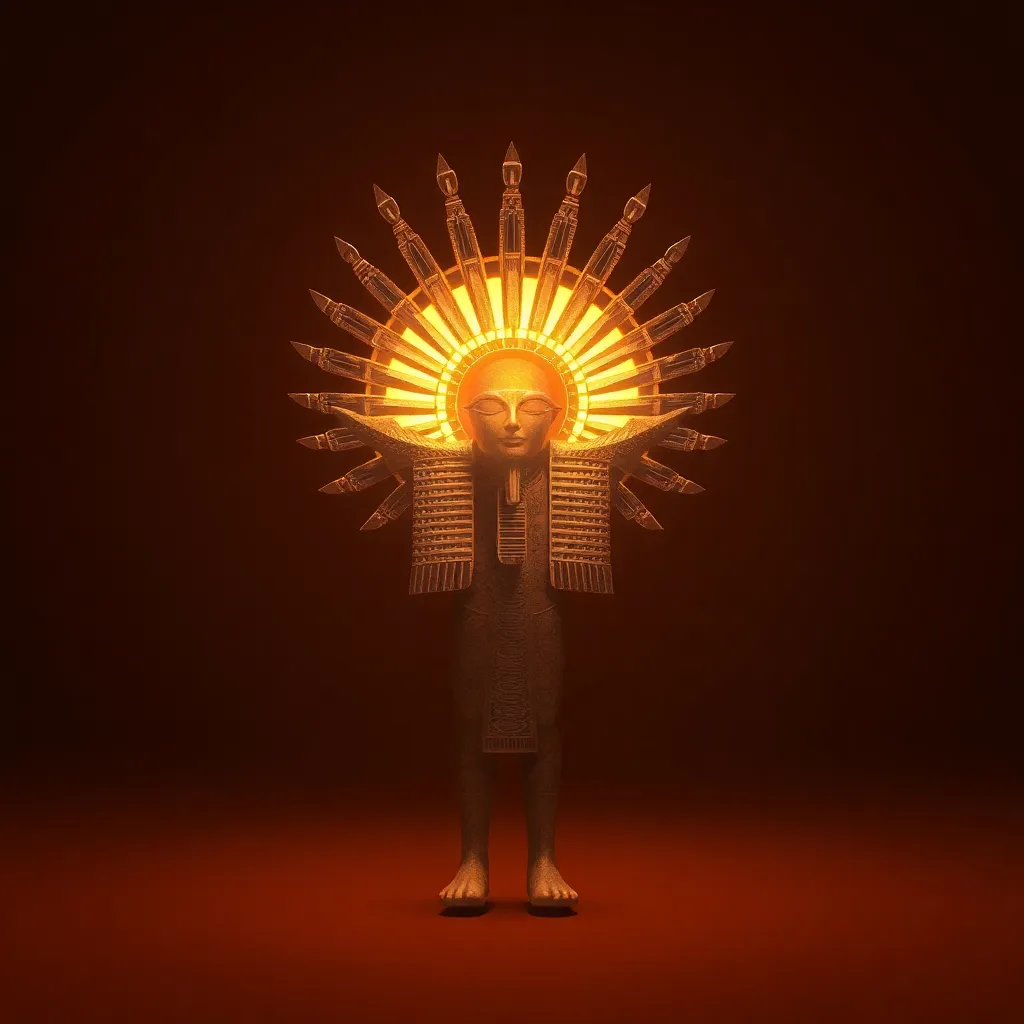The Sun God’s Manifestations: Different Aspects of Aten
I. Introduction
Aten, the Sun God in Ancient Egyptian religion, represents a pivotal figure in the pantheon of deities worshipped by the ancient Egyptians. Unlike the myriad of gods that characterized Egyptian belief systems, Aten emerged as a singular entity, symbolizing a monotheistic approach that was revolutionary for its time.
The significance of Aten extends beyond mere religious practices; it embodies a cultural shift that resonates with themes of light, life, and divinity. This article aims to explore the various manifestations and aspects of Aten, highlighting its role in ancient Egyptian spirituality and its enduring legacy.
II. Historical Context of Aten Worship
The origins of Aten can be traced back to the sun disk, which was worshipped in various forms long before the Amarna Period. However, it was during this era that Aten was elevated to unprecedented prominence, particularly under the reign of Pharaoh Akhenaten. Akhenaten’s radical shift from polytheism to the worship of a singular deity marked a significant transition in Egyptian religion.
Key figures in the worship of Aten include:
- Akhenaten: The pharaoh who established Aten as the supreme deity.
- Nefertiti: Akhenaten’s queen, who played a vital role in promoting Aten worship.
- Subsequent rulers: Many attempted to revert back to traditional polytheistic practices.
III. The Symbolism of the Sun Disk
Aten is often depicted as a sun disk emanating rays, with hands reaching down to offer life. This visual representation is not merely artistic; it carries deep symbolic meanings within Egyptian cosmology. The sun disk signifies:
- Life and sustenance: The sun is essential for agricultural prosperity.
- Divine presence: Aten’s rays are seen as the source of divine blessings.
- Illumination: Representing knowledge, enlightenment, and the dispelling of darkness.
As a life-giver and sustainer, Aten was intimately connected to the cycles of nature, embodying the essential elements of survival and growth.
IV. Aten as a Creator God
Aten’s association with creation is profound in ancient Egyptian mythology. As a creator god, Aten is linked to several creation myths that underscore his role as the origin of all life. The concept of Aten as a source of life and fertility is reflected in various texts and inscriptions, emphasizing his nurturing aspect.
When comparing Aten to other creator deities in Egyptian mythology, parallels can be drawn with:
- Khnum: The god who shaped humans from clay.
- Ptah: The craftsman god associated with creation through thought and word.
Yet, Aten’s unique position as a singular sun deity sets him apart, representing not just creation but the sustenance of life through light.
V. Aten’s Manifestations in Art and Architecture
Aten’s presence in ancient Egyptian art is marked by distinctive depictions in reliefs, inscriptions, and sculptures. Artists portrayed Aten with rays of light extending from the sun disk, often showing the god granting life to Akhenaten and his family.
Architecturally, the reign of Akhenaten saw significant innovations, such as:
- The temple at Karnak: A monumental structure dedicated to Aten.
- The city of Akhetaten (modern-day Amarna): Built as a center for Aten worship.
These artistic and architectural endeavors served to convey Aten’s power and influence, reinforcing his status as the supreme deity of the time.
VI. The Duality of Aten: Benevolent and Terrifying Aspects
The nature of Aten embodies a duality that reflects the complexities of the sun itself. On one hand, Aten is a benevolent force, providing sustenance and prosperity through warmth and light. On the other hand, he also possesses terrifying aspects, with destructive solar phenomena such as droughts and scorching heat.
This duality is essential in understanding the cultural perceptions of balance in ancient Egyptian belief systems. The Egyptians recognized:
- The importance of honoring Aten through rituals to ensure his favor.
- The need to appease his more wrathful aspects to avoid calamity.
VII. The Legacy of Aten Worship
After the reign of Akhenaten, the worship of Aten declined as subsequent pharaohs restored traditional polytheistic practices. However, the influence of Aten worship persisted, impacting later religious movements and concepts of monotheism.
In modern interpretations, Aten is often viewed as a precursor to later monotheistic beliefs, particularly in the context of Abrahamic religions. The lasting impact of Aten can be seen in:
- Artistic representations in contemporary culture.
- Scholarly studies examining the evolution of religious thought.
VIII. Conclusion
Aten’s multifaceted nature and significance in Ancient Egyptian religion reflect a complex understanding of the divine. The study of Aten’s manifestations provides invaluable insights into ancient belief systems and the cultural milieu of the time.
As we reflect on the enduring legacy of the Sun God Aten, we recognize the importance of this deity not only in ancient history but also in the broader context of spirituality and religious evolution.




